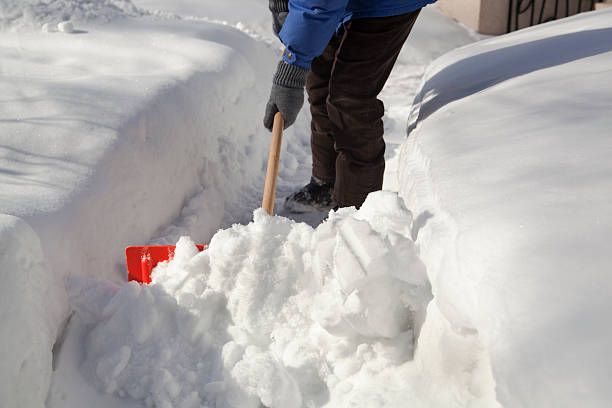The snow has finally settled into northern Michigan, and that means our physical therapy offices are about to see a patient or two every week that injures themselves when clearing their sidewalks or driveways.
I admire anyone who likes to get out in the fresh air and get a little exercise, but I hate to see someone laid up for weeks at a time when a few ounces of prevention can keep them safe. Here are a few common injuries associated with moving snow:
- Back/sacroiliac joint strains- If you remember nothing else from this article, let it be this: any activities which combine bending, twisting, and lifting a load are extremely high risk for injury, especially of the spine. Digging a scoop of snow which weighs 5-20 pounds places tremendous stress on the spine should be avoided at all costs.
- Shoulder strains- 10 pounds of snow at the end of a 3-foot shovel can require 40 pounds of force to lift and throw. It’s no wonder that tossing multiple shovels-full can place a great deal of stress on the shoulder.
Elbow strains- As above, the amount of forced placed on the lead arm can be very significant. Sometimes there are activities that cannot become risk free, but can be made less dangerous. Lifting the snow with your legs and getting the lead hand closer to the end of the shovel are 2 tricks that should reduce soft tissue strain.
Now that it is clear that shoveling is a high-risk activity for your body, here are some suggestions to keep yourself out of trouble this winter:
- Warm-up- Before shoveling, get your muscles warmed-up with 3-5 minutes of light exercise. Also, incorporate 10-15 mini-squats movements to both get your tissues ready to work and reinforce proper bending mechanics.
- Push rather than lift– Try to push the snow instead of lifting it. If you must lift, do it properly. Squat with your legs apart, knees bent and back straight. Lift with your legs. Do not bend at the waist.
- Don’t throw snow– Scoop small amounts of snow into your shovel and walk to where you want to dump it. Holding a shovelful of snow with your arms outstretched puts too much weight on your spine. Keeping the load close to your body limits the strain on the muscles of your low back.
- All things in Moderation– Don’t tackle a 4-foot drift at once. Take a short break every 15-25 minutes and prevent dehydration by drinking plenty of fluids. Good hydration keeps your tissues (back muscles and lumbar discs) resilient to the stress of pushing and lifting heavy snow.
- Listen to your Body– If you start to feel burning or aching, that’s your body sending you the message that you need to stop and take a break or get someone else to finish. If the initial symptoms don’t go away, get it checked out by your physician or a physical therapist. If you experience chest pain, shortness of breath or other signs of a heart attack, stop and seek emergency care.
- Dress for Success-Wear light, layered, water-repellent clothing because it provides both ventilation and insulation. Avoid falls by wearing shoes or boots that have slip-resistant soles.
- Don’t Shovel – Use a Snow Blower or Get Someone Else to do it!-It sounds funny to suggest, but the best way to avoid back injury from shoveling snow is to not shovel snow. A snow blower is a great option as is having someone else do it. You may find the investment cost of a snow blower or plowing services is much less than going in for a $1,000+ MRI.







